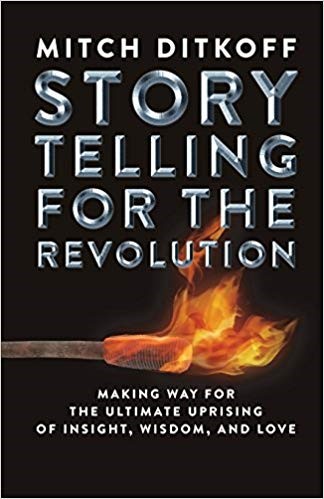What a Story Is Not

For the past three years, I've been facilitating Wisdom Circles in Woodstock, NY and San Miguel de Allende, Mexico. They have been an absolute delight -- wonderful gatherings of open-minded people who intuitively understand the power and glory of storytelling. And yet, during that time, I've noticed a curious phenomenon: Even though the word "story" is well-known to everyone, not everyone understands how to tell a story with impact.
I am not going to give you instructions for how to do that. Why not? Because you already know. You do. It's just that, sometimes, funky old habits get in the way. When you let go of those habits, the story you want to tell will shine. (Kind of like what Michelangelo said when asked how he made the David: "I simply took away everything that wasn't.")
So...here goes: six things storytelling is not:
1. A Chance to Tell the Story of Your Life: Just because you have a captive audience doesn't mean you have to rewind the tape of your life and tell them everything. No one really wants to hear it. While you may feel better at the end of your monologue, no one else will.
2. You Talking About Things: Simply stringing together a bunch of things that "happened" to you is not a story. It may be a report, a list of accomplishments, or you "waxing poetic" about something you care about, but it is not a story. Stories have a dramatic arc -- a beginning, a middle, and an end. TheY flow, like a river, to the ocean. They are not random puddles.
3. A Sanitized Summary of an Experience You'd Had: Most amateur storytellers tend to underplay or completely omit one of the most important elements of a story -- the obstacle. Little Red Riding Hood had to deal with the Big Bad Wolf. Perseus had to deal with the Minotaur. Luke Skywalker had to deal with Darth Veda. No obstacle, no story. Of course, this obstacle might be an "inner" obstacle like fear, doubt, or procrastination. That's fine. Just don't forget to give your obstacle its proper due.
4. Multiple Stories Threaded Into One: Dizzy Gillespie said it best: "It took my entire life to learn what not to play." Translation? Be economical in the telling of your stories. Be selective! Know what to leave out. Just because something in your story reminds you of something else, that doesn't mean you should include it. If you do, you run the risk of spreading yourself too thin and your audience losing interest.
5. Talking to Yourself in Monotones: Some aspiring storytellers, not sure if their story is a "good" one or that anyone will listen, have a tendency to speak in a very soft voice or forget to make eye contact. Oops! Not a good idea. If no one can hear your story, what good is it? And remember, it's not just about the words, it's about the feeling behind the words.
6. Retelling an Experience (Instead of Reliving It): It is not uncommon for aspiring storytellers, in their commitment to "tell what happened", to leave out the emotion of the story. Facts are one thing, feeling is quite another. Without feeling, your story becomes lifeless -- merely an 11:00 news report. Embodying your story is the real work. Inhabiting it -- not just hydroplaning on the surface of events, but diving in to the deep end of the experience you are attempting to convey. (Big shout out to Gail Larsen for this important distinction.)
The next post: 12 tips for telling a good story
How to Tell a Good Story
Why We Tell Stories
Ten Reasons Why People Don't Tell Their Stories
Posted by Mitch Ditkoff at July 23, 2019 08:37 AM
Post a comment
Thanks for signing in, . Now you can comment. (sign out)
(If you haven't left a comment here before, you may need to be approved by the site owner before your comment will appear. Until then, it won't appear on the entry. Thanks for waiting.)







 If you like this blog, you might also like Mitch's other two blogs:
If you like this blog, you might also like Mitch's other two blogs: 